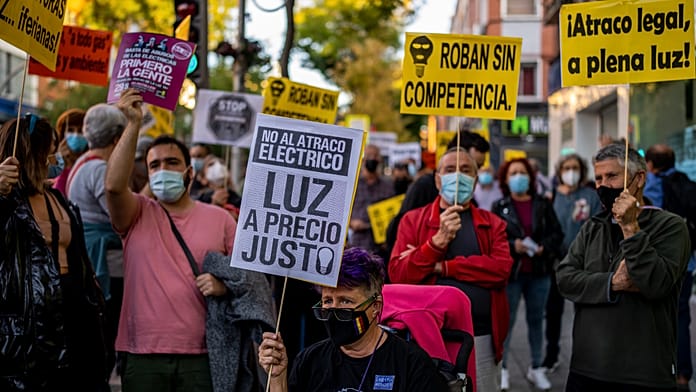One of the more unusual places to visit in Bologna is the chapel containing the mummy of Saint Catherine of Bologna, who is also known as Saint Catherine de’ Vigri. Catherine or Caterina in Italian, was the Abbess of the community of Poor Clare nuns at the Corpus Domini convent in Bologna at the time of her death in 1463. She was buried in the convent graveyard, but exhumed 18 days later after the nuns noticed a sweet smell coming from the tomb.
 Saint Catherine of Bologna seated in her chapel. (P. Granville)
Saint Catherine of Bologna seated in her chapel. (P. Granville)Her skin was still white, but it has since darkened from centuries of exposure to lamps and candles. From at least 1529 to the present she has occupied a chapel at the church of Corpus Domini.
My post gives some of the details of the life of this mystic, author, artist, musician and abbess but to read about how to visit Bologna’s female patron Saint, skip to Visiting Santa Caterina.
Catherine’s early life
Caterina de’ Vigri was born in Bologna in 1413 to aristocratic parents Benvenuta Mammolini and Giovanni de’ Vigri. Her father occupied a position of importance in administration for Marquis Niccolò III d’Este in the town of Ferrara ( see my blog post A Day Trip To Ferrara)
In around 1424, Caterina became a lady-in-waiting to Margherita d’Este, an illegitimate daughter of Niccolò III, or according to some sources to his second wife Parasina Malatesta. Margherita and Caterina, who were almost the same age, became close friends and together received a good education for the time, including reading and writing Italian and Latin, music, calligraphy and painting.
 Castello Estense in Ferrara was one of the residences of the d’Este family in the 15th century. (P. Granville)
Castello Estense in Ferrara was one of the residences of the d’Este family in the 15th century. (P. Granville)Caterina was probably disenchanted with court life by the dissolute behaviour that she would have witnessed. Niccolò is said to have had 800 lovers and innumerable illegitimate children, including Margherita.
 Ugo d’Este, son of Niccolò III (Wikimedia)
Ugo d’Este, son of Niccolò III (Wikimedia) Marchioness Parisina Malatesta, second wife of Niccolò III (Wikimedia)
Marchioness Parisina Malatesta, second wife of Niccolò III (Wikimedia) Marquis Niccolò III d’Este (Wikimedia)
Marquis Niccolò III d’Este (Wikimedia)In 1425, using a maid as a spy, Niccolò confirmed his suspicions that his much younger wife Parisina and Ugo, his illegitimate son and heir, had become lovers. He had them both beheaded.
 The entrance to the dungeon of the d’Este castle in Ferrara where Parisina and Ugo were imprisoned before they were beheaded. (Wikimedia)
The entrance to the dungeon of the d’Este castle in Ferrara where Parisina and Ugo were imprisoned before they were beheaded. (Wikimedia)This tragic story was the basis of, amongst other works, a long poem by Lord Byron, operas by Donizetti and Mascagni and a 19th century painting by Girolamo Domenichini.
 The condemnation of Ugo and Parisina by Girolamo Domenichini. (Wikimedia)
The condemnation of Ugo and Parisina by Girolamo Domenichini. (Wikimedia)Not long after, Margherita married Galeotto Malatesta and moved to Rimini where her new father-in-law ruled. Barely a teenager, Caterina decided to leave the court to start a new life.
Religious life in Ferrara
Caterina joined a community of women in Ferrara who were leading a religious life without formally taking vows. After a split in the community, Caterina chose to become a member of the group that established the Poor Clare convent of Corpus Christi. The Poor Clares were founded by Francis and Clare of Assisi in 1212 and followed lives of communal poverty.
 Corpus Domini convent, Ferrara. (ferraraterraeacqua.it)
Corpus Domini convent, Ferrara. (ferraraterraeacqua.it)Caterina spent most of her life here, from 1431 to 1456, during which time she had a number of visions, such as one at Christmas in 1445 when the Virgin Mary showed her the baby Jesus.
She also wrote mystical texts, including “Le Sette Armi Spirituali” or “The Seven Spiritual Weapons”, written as a manual for novices. It contains descriptions of her visions of both God and Satan. She kept the text secret until she was close to death, after which it was published, became very well known, and was translated into 8 languages.
 A printed copy of “The Seven Spiritual Weapons” from ca. 1475. (Wikimedia)
A printed copy of “The Seven Spiritual Weapons” from ca. 1475. (Wikimedia)Caterina was also active in copying breviaries and illuminating them, which for her was a form of mystical meditation. Breviaries were books of prayers to be used at certain times of each day.
 Saint Francis
Saint Francis Jesus
Jesus Saint Clare
Saint ClareOne author comments on Caterina’s illumination of her personal breviary. “The final result was a breviary with very personal iconographic inventions, decorated in a simple female style that followed the model of Clare, the needle woman, and evoked the humility of the Poor Clares’ vows”.
Abbess
In 1456, Caterina, who had become a well known figure and was Mistress of Novices in Ferrara, was asked to establish a new Poor Clare convent in Bologna.
 The convent still occupies a large block in central Bologna, including a kitchen garden. (Google Earth)
The convent still occupies a large block in central Bologna, including a kitchen garden. (Google Earth)She was abbess here until her death in 1463. As described above, 18 days after her death, her body was found to be preserved and was exhumed.
 Madonna with baby Jesus and fruit attributed to Santa Caterina held in the chapel at Corpus Domini, Bologna. (Wikimedia)
Madonna with baby Jesus and fruit attributed to Santa Caterina held in the chapel at Corpus Domini, Bologna. (Wikimedia) She was quickly beatified, a process in the Catholic Church that declares a person has entered heaven and can intercede on behalf of those who pray to them.
 A portrait of Beata Caterina de Bologna by Guglielmo Giraldi from the Gualenghi d’Este Book of Hours ca. 1469. (Getty Museum Collection)
A portrait of Beata Caterina de Bologna by Guglielmo Giraldi from the Gualenghi d’Este Book of Hours ca. 1469. (Getty Museum Collection)It wasn’t long before miracles were being attributed to Beata Caterina. Nuns would visit the sick of Bologna on request with water that had been used to wash her body and parts of her clothing. Miraculous cures were carefully recorded and would amount to 160 by the time she became a saint.
Caterina’s fame continued to grow and there were illustrious visitors such as Emperor Charles V and Pope Clement VII who were in Bologna for the emperor’s coronation in 1530.
 Emperor Charles V and Pope Clement VII after the coronation in Bologna in 1530. (Juan de la Corte, Wikimedia)
Emperor Charles V and Pope Clement VII after the coronation in Bologna in 1530. (Juan de la Corte, Wikimedia)Santa Caterina
After a false start to achieve her canonisation in the 16th century, around 70 years later the city’s noble families pushed for a resumption of investigations, based on Catherine’s uncorrupted body and the many miracles attributed to her.
By then, the Church had introduced a new process for determining if someone was indeed a saint which relied much more heavily on the opinion of doctors, and increased the importance of the role of the Promotor Fedei or devil’s advocate.
 Saint Catherine of Bologna with Three Donors Master of the Baroncelli Portraits (active c.1489) (The Courtauld)
Saint Catherine of Bologna with Three Donors Master of the Baroncelli Portraits (active c.1489) (The Courtauld)In Caterina’s case, three recently claimed miracles in particular were important, as the doctors’ testimony was that they had been unable to cure the maladies in question and the cures could only have been miraculous.
In 1671, to investigate the claim of her uncorrupted body, a group of eight eminent Bolognese physicians examined her head, neck, arms, feet and legs below the knee, which were considered the limits of decency.
 The eminent Bolognese biologist and physician Marcello Malpighi was one of eight doctors who examined the body of Saint Catherine in 1671. (Wikimedia)
The eminent Bolognese biologist and physician Marcello Malpighi was one of eight doctors who examined the body of Saint Catherine in 1671. (Wikimedia)A majority, including the internationally famous Marcello Malpighi, believed that a lack of flesh indicated that the body had merely dried out and was not uncorrupted. However, a group of 5 Bolognese noble women examined more of the body and reported that her breasts and thighs were still fleshy.
In the end, the three miracles carried the day and the issue of her uncorrupted body was dealt with by adopting the position that it had been uncorrupted, but wasn’t anymore.
 Santa Caterina da Bologna, also known by her family name Santa Caterina de’ Vigri. (P. Granville)
Santa Caterina da Bologna, also known by her family name Santa Caterina de’ Vigri. (P. Granville)Catherine was declared a saint in 1712.
Visiting Santa Caterina
Santa Caterina can be found in a chapel on the left side of the nave in the church of Corpus Domini, located at 19 Via Tagliapietre. This church was constructed in the late 15th century, however the interior was remodelled in the 17th century. It was badly damaged in a 1943 air raid that was targeting nearby military barracks.
 The terracotta decorated portal of Corpus Domini church. (P. Granville)
The terracotta decorated portal of Corpus Domini church. (P. Granville) Detail of the facade of Corpus Domini, Bologna. (P. Granville)
Detail of the facade of Corpus Domini, Bologna. (P. Granville) Detail of the facade of Corpus Domini, Bologna. (P. Granville)
Detail of the facade of Corpus Domini, Bologna. (P. Granville) The facade of Corpus Domini retains its Renaissance appearance. (P. Granville)
The facade of Corpus Domini retains its Renaissance appearance. (P. Granville) The dome of Corpus Domini was reconstructed after it was heavily damaged by bombing during WW2. (P. Granville)
The dome of Corpus Domini was reconstructed after it was heavily damaged by bombing during WW2. (P. Granville)After 567 years, interrupted only during the Napoleonic period, the Poor Clare nuns left the convent early in 2023, as their number had dropped to an unsustainable four. During visits to the Saint’s chapel, a little window would pop open revealing a nun who would admonish anyone being disrespectful. Now, lay volunteers manage the chapel.
As well as the Saint herself, the chapel contains numerous relics such as paintings, manuscripts and ex-votos. Of great interest to early music researchers is her small instrument usually referred to as a violeta. In the Franciscan tradition, music was important to the Poor Clares and a contemporary biography mentions Caterina, during a serious illness, asking for her violeta to play and praise with.



Just 49cm long, it is said to be the oldest surviving bowed string instrument in Europe. The only somewhat similar instruments appear in several of the paintings of Fra Angelico from the mid 15th century.
 Detail from The Crowning of the Virgin Mary by Fra Angelico ca. 1435. (Louvre via Wikimedia)
Detail from The Crowning of the Virgin Mary by Fra Angelico ca. 1435. (Louvre via Wikimedia)In 2015, it was examined in detail and a copy was made by a local luthier. Similarly to some folk instruments, it’s carved out of a solid piece of wood.


At the time of writing, the chapel and adjacent small museum were open on Tuesdays, Thursdays and Saturdays 10:00 – 12.00 and 16.00 – 1800 as well as on Sundays 10.00 – 11.15 and 16.00 -18.00.
There is also a view of Santa Caterina, whenever the church is open, through a round window on the left near the main altar.
 Santa Caterina can be seen from the nave of the church. (P. Granville)
Santa Caterina can be seen from the nave of the church. (P. Granville)
 2 anni fa
684
2 anni fa
684






















